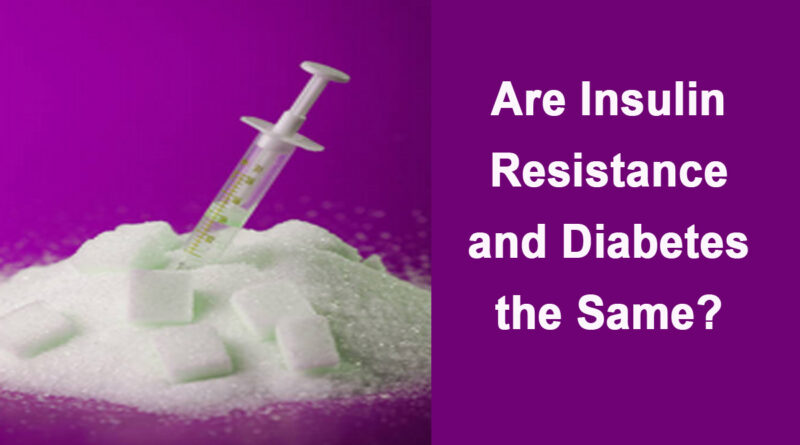Are Insulin Resistance and Diabetes the Same?
There are many people who think that insulin resistance and diabetes are one and the same but they are not.
Diabetes
Diabetes is a condition that affects the way your body utilizes food for energy. Normally, the sugar you take in is digested and broken down to a simple sugar, known as glucose. The glucose then travels in your blood where it waits to enter cells to be used as fuel.
Insulin
Insulin, a hormone produced by the pancreas, is what helps move the glucose into cells. A healthy pancreas adjusts the amount of insulin based on the level of glucose. However, if you have diabetes, this process breaks down, and blood sugar levels become too high.
Insulin Resistance
On the other hand, insulin resistance is a silent condition that increases the chances of developing diabetes, and even heart disease. Becoming knowledgeable about insulin resistance is the first step you can take toward making lifestyle changes that will help you prevent diabetes and other health problems.
Check out these related articles, too:
The 10 Best Foods to Control Dangerous Blood Sugar Levels
The Dangerous Side of Diabetes Drugs
6 Simple Tips to Avoid Dangerous Blood Sugar Levels
Why The Diabetics Food Guide Pyramid May Be Dangerous
Severe Uncontrolled Diabetes Warning Danger
High Blood Sugar Symptoms and Dangerous Blood Sugar Levels
If a person is insulin resistant, their muscle fat and liver cells do not make proper use of insulin because the cells have a diminished ability to respond to the action of the insulin hormone. Because the pancreas tries to keep up with the demand for insulin by producing more, the process to do so becomes compromised and excess glucose builds up in the bloodstream, since the pancreas cannot keep up with the body’s need for insulin. In essence many people with insulin resistance have high levels of blood glucose and high levels of insulin circulating in their blood simultaneously.
Studies have shown that more people with insulin resistance, go on to develop type 2 diabetes within 10 years. However this can avoided if they lose 5 to 7 percent of their body weight-which is about 10 to 15 pounds for someone who weighs 200 pounds. Hence the importance of a daily exercise regimen; even if it is only a 30 minute walk per day, it helps. Insulin resistance can also occur in people who have type 1 diabetes. This is true especially if they those who are overweight.
Diabetes and Insulin Resistance are Not the Same, But are Related
In essence, diabetes and insulin resistance are not the same but yet are related. There are several factors that determine if one or the other is present in the body and the symptoms for each are slightly different, although you will find that some are the same. Thus the confusion that they are one and the same health challenge.
Symptoms Indicating Possible Risk of Insulin Resistance
Women:
1. Overweight
2. Waist bigger than your hips
3. Buttocks slightly bigger than normal
Men:
1. Overweight
2. Larger stomach
If you are overweight, have a waist that is bigger than your hips, are a woman whose buttocks are slightly bigger than normal, or if you are a man with a rather larger stomach, then you may be at risk for insulin resistance. These are a few of the symptoms of insulin resistance with the weight and waist issues being major reasons to consider your health.
No matter the level, it really is up to every individual to take charge of their health and learn to take more proactive measures to healthier living.
Are cravings for sugar, salt, junk food, sodas, and coffee running your life? For over 20 years, Diana Walker, the Cravings Coach, has assisted people like you in using natural, safe options for creating vibrant health. Check out Diana’s newsletter, blog and podcast at [http://www.thecravingscoach.com/blog] and at http://www.diana2.com
Article Source: http://EzineArticles.com/1948460




